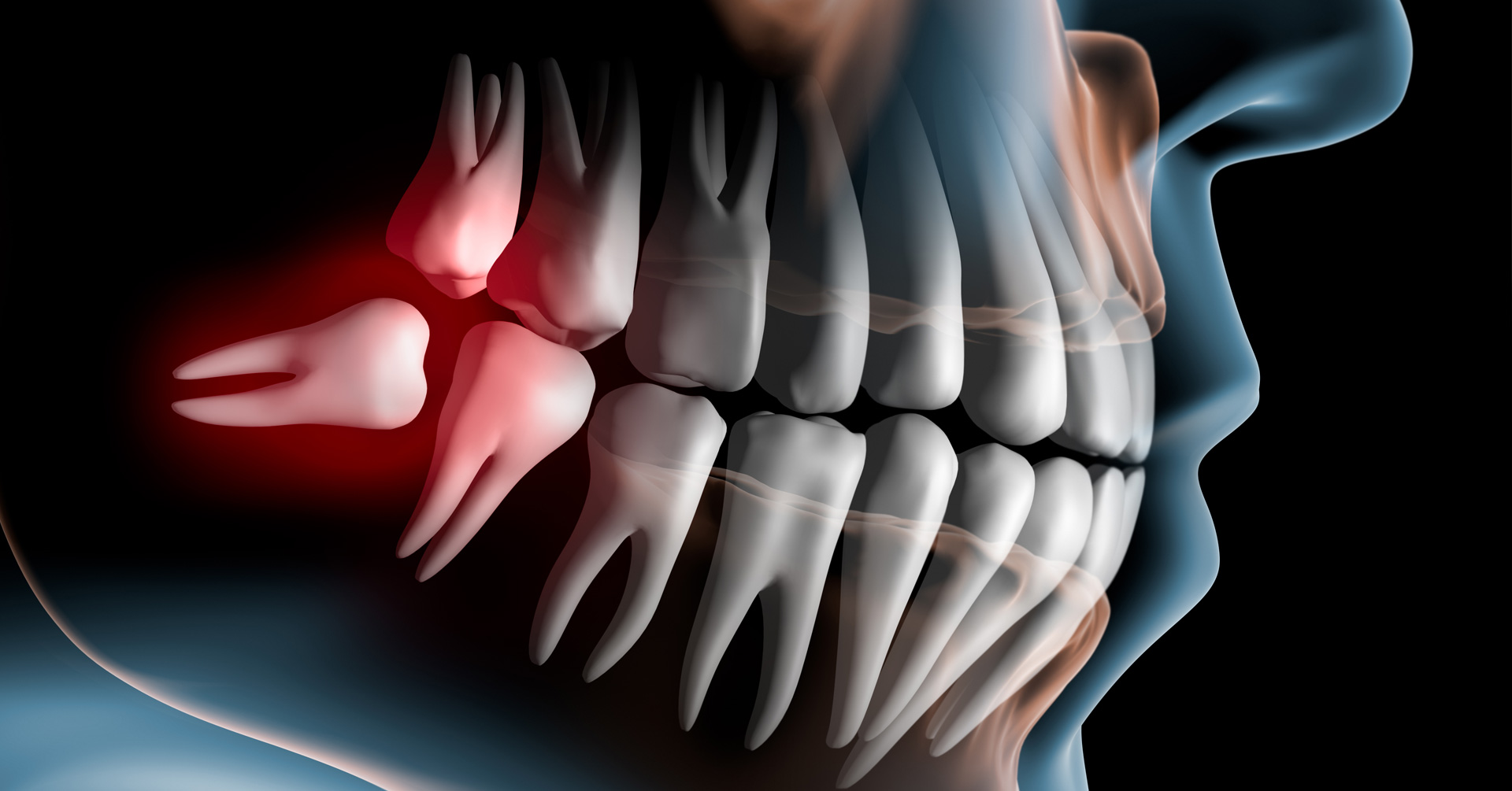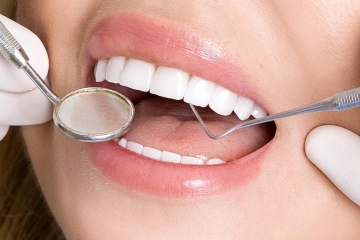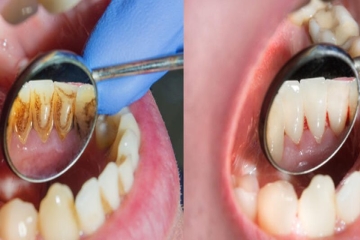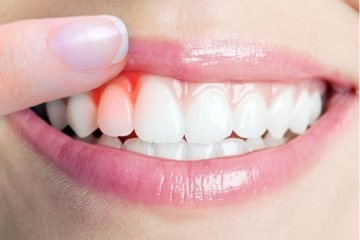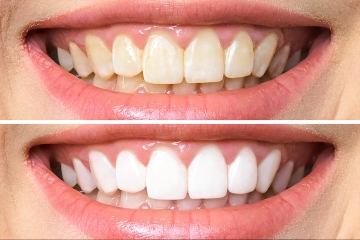What is an embedded wisdom tooth?
WISDOM tooth extraction is divided into 2 types as embedded and semi-embedded. Anatomically, the hindmost molars, which make up 4 of the 32 teeth and are normally likely to come out in every person, are called wisdom teeth ( wisdom teeth ). In some people; because the jaw structure is small, there is no gap where the tooth is trying to come out, which means that the tooth tires the jawbone and skin thoroughly when it comes out, because there is no space in the jaw, so pain is observed as the first signs of coming out, and the distortion of other teeth accelerates. Because it puts pressure on the jaw, it can also cause jaw pain, headache, which is thought to be a migraine, nausea, if it is inflamed, germs leaking out can also cause sore throat and tonsil swelling. It is observed that wisdom teeth usually come out Decently between the ages of 17 and 30. It may not occur to everyone, it is a completely genetic-related condition. In addition, inflammation of the tooth can cause nausea, throat swelling and high fever.Although WISDOM tooth extraction surgery is usually not difficult, it heals within a period of 1 – 2 weeks. WISDOM cavities formed in the palate after dental extraction can be treated with orthodontics.
WISDOM tooth extraction
Why do you have wisdom teeth?
Adults have a total of 32 teeth. Wisdom teeth, on the other hand, are located at the very end of the tooth row arrangement in the lower and upper jaw. Wisdom teeth have lost their functionality over time, and if the human jaw has a small structure, it can only be the size that 28 or 30 teeth can fit. If your other teeth are healthy and you don't have tooth loss, you don't need wisdom teeth at all.
Is it difficult to get wisdom teeth removed ?
The difficulty of embedded WISDOM tooth extraction depends on the position of the roots. The fact that tooth extraction is a little more difficult than normal is easily understood as a result of the jaw film taken. In both cases, there is no pain and pain because local anesthesia will be taken. On the contrary, after the tooth extraction process is completed, a great relief occurs inside the mouth.
What Can I Do Before Going to the Dentist in Case of WISDOM Tooth Pain and Wisdom Tooth Inflammation ?
As a quick, effective and practical solution, rinse your mouth with salt water in case of wisdom toothache and make sure that salt water touches places that cannot be reached with a toothbrush. You can gargle with a mouthful of water and a teaspoon of salt, this can allow you to reduce gum pain and inflammation on your own without medication. Make sure that the water is not hot before use. Do this several times during the day. Chlorhexidine can also be used in combination with an antibacterial mouthwash to reduce inflammation. Pain-relieving tablets such as paracetamol derivatives or ibuprofen derivatives may also help in the short term. But if you have toothache and WISDOM tooth problems, please consult your doctor first.
Are Wisdom Teeth(Removal of embedded teeth) Necessary?
Does the wisdom tooth necessarily come out and if it does, should the WISDOM tooth be extracted? his question is usually the first question that our patients experiencing this problem ask to physicians. If the condition has already progressed enough to see a doctor, getting the shot will be positive from an oral health and aesthetic point of view. The situations in which the tooth will not be pulled can be summarized as follows.
In the case that the tooth is healthy and at the same time does not harm oral health.
In cases where the tooth has completely come out. The tooth that comes out alone should be correctly positioned and should not disrupt the arrangement of other teeth.
What are the Damages of an Embedded Tooth?
Sometimes wisdom teeth appear only partially. Other times, it remains completely hidden. Wisdom teeth can grow in the jaw, sometimes in reverse, horizontally, or at various angles in the jaw. This condition disrupts the tooth structure and distorts the other teeth.
Wisdom teeth can sometimes appear partially integrated with the gums. This condition can cause gum disease, as well as it is known that it has a magnet effect for microbes and bacteria. Half-buried teeth that come out should definitely be removed.
If you have other oral problems, wisdom tooth extraction is not always the last resort. You should discuss with your dentist in detail about whether an embedded tooth extraction is mandatory, and the condition of your 20-year-old tooth, and undergo an examination.
What are the Methods of WISDOM Tooth Surgery?
Your dentist or oral surgeon offers 2 options when performing the operation. These;
Local anesthesia: Your doctor or oral surgeon will recommend local anesthesia for tooth extraction. With this method, you will be awake during WISDOM tooth extraction. Although you may feel some pressure and movements, you definitely do not feel pain and soreness.
General anesthesia: In special cases, general anesthesia can be performed.This method can be by sniffing through your nose or through an intravenous route through your arm. Then the patient loses consciousness. At this time, the surgical team closely monitors breathing, temperature, fluid and blood pressure. At the same time, the tooth extraction process is performed.
What you need to do after WISDOM tooth extraction
In order to recover faster, you should definitely follow the recommendations of your dentist. You can find some of them below.
Bleeding: Some bleeding conditions can occur on the first day of tooth extraction. Spitting out can cause damage to the place where the tooth was pulled out. In addition to bleeding, it will be more correct to apply a tampon to the area where the tooth was pulled.
Pain: In the area where the tooth is extracted, pains are monitored in the area opened in the jawbone during the acclimation process. Using a prescription painkiller prescribed by your dentist or oral surgeon will prevent you from feeling pain.
Swelling and bruising: in this case, it will be correct to use an ice pack. Swelling in the cheeks may continue for a few days. It may take two to three days for the bruising to pass.
Activity: We recommend that you rest for the rest of the day after the operation. You can resume your normal activities the next day, but make sure to avoid strenuous activities for at least a week.
Drinks: Drink plenty of water after the operation. Do not consume alcoholic caffeinated, carbonated or hot drinks within the first 24 hours.
Food: During the first 24 hours, eat soft foods, for example, yogurt or warm soup. Avoid hard, sticky, hot or spicy foods.
Cleaning the mouth: Do not brush your teeth, just rinse your mouth, do not use it in mouthwash within the first 24 hours after surgery. you can continue brushing your teeth after 24 hours. Be especially gentle near the surgical wound when brushing, and gently rinse your mouth in warm salt water every two hours and after meals for a week.
Tobacco use: If you smoke, do not use tobacco for at least 72 hours after surgery. Tobacco use can delay recovery and increase the risk of complications you should not use tobacco products after oral surgery.
Stitches: The stitches will be solved or removed within a few weeks. Your doctor takes the stitches that do not melt on their own.
Emergency Situations That You Should Consult Your Dentist About After Wisdom Tooth Surgery
If you have an infection condition, it may indicate nerve damage or other serious complications. If you experience any of the following symptoms, you should contact your dentist or oral surgeon. If the swelling on your tooth is excessive or the cheek looks completely swollen, you should consult your dentist. Again, if the embedded toothache is very severe, you should also take this into account. Swelling is seen a few days after the removal of wisdom teeth. After the body heals, there will be no difference in your face or appearance.
Difficulty swallowing or inability to breathe
Excessive bleeding
Severe pain where painkillers don't work
Two or three days later, the swelling continues
Feeling of electric shock in contact with pus or nerve
Permanent numbness or loss of sensation
Blood or pus discharge from the nose
